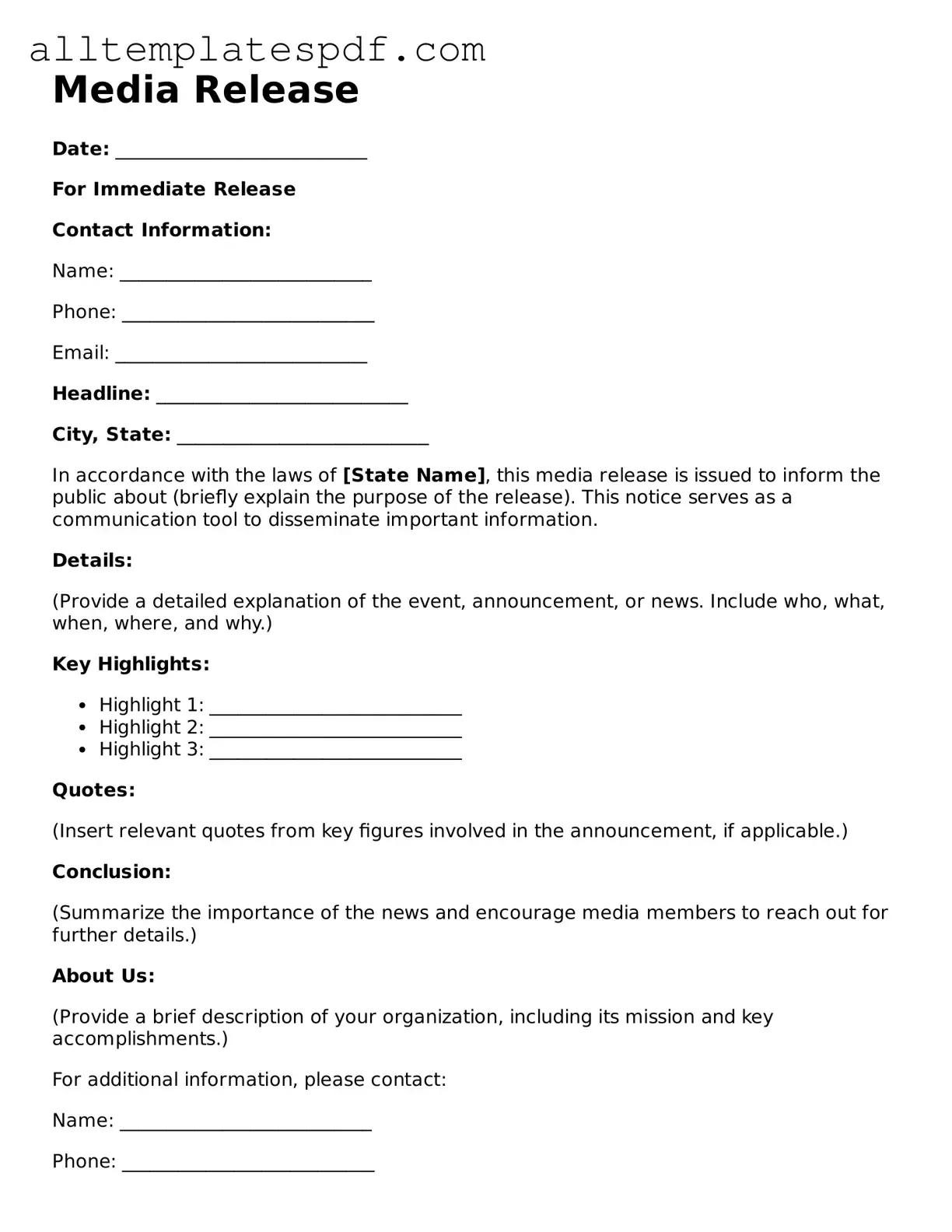Filling out a Media Release form can seem straightforward, but many people make common mistakes that can lead to issues down the line. One frequent error is not providing complete information. When a form asks for your name, contact details, and any relevant affiliations, it’s crucial to fill in every section. Leaving out even a small detail can create confusion and delay the process.
Another mistake is failing to read the terms carefully. Many individuals skim through the fine print, missing important clauses about how their information or image will be used. Understanding these terms ensures that you know what you are agreeing to, which protects your rights and preferences.
People often overlook the importance of signatures. A Media Release form typically requires a signature to validate the agreement. Some forget to sign or fail to provide a date. This can render the form invalid, and without a signature, the release may not hold up legally.
In addition, some individuals do not keep a copy of the signed form. It’s essential to have a record of what you agreed to, especially if any questions arise later. Without your own copy, you may find it difficult to reference the terms you accepted.
Lastly, many people neglect to check the contact information of the organization requesting the release. It’s important to ensure that you are dealing with a legitimate entity. Confirming their details can help you avoid potential scams or misuse of your information.
